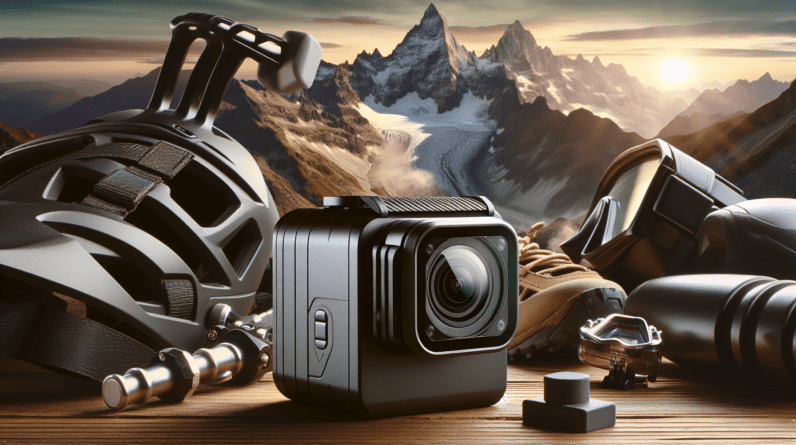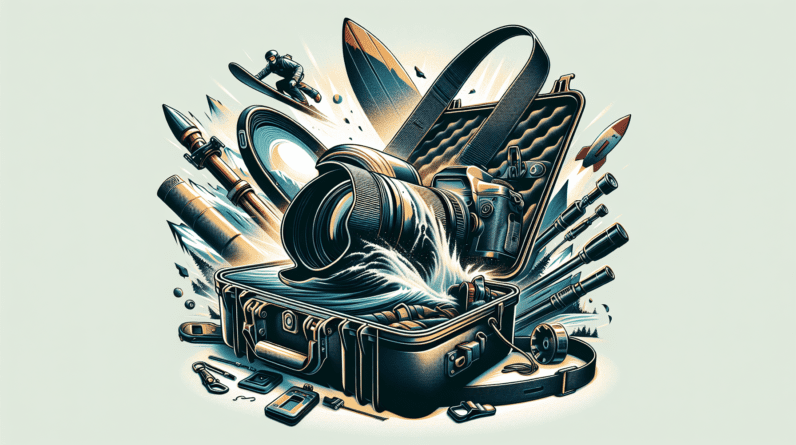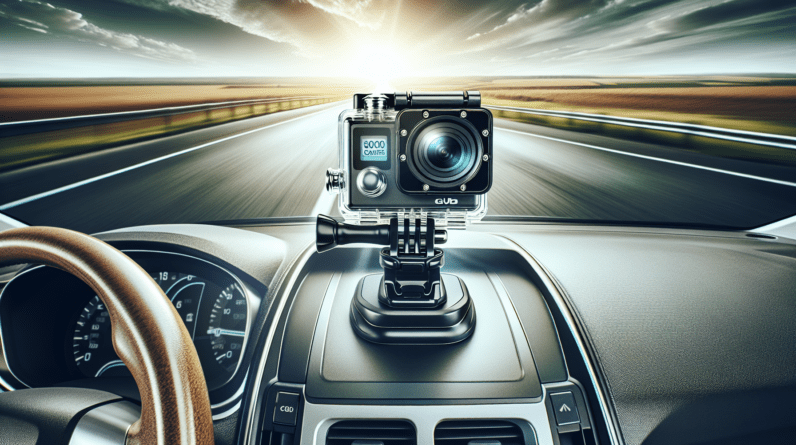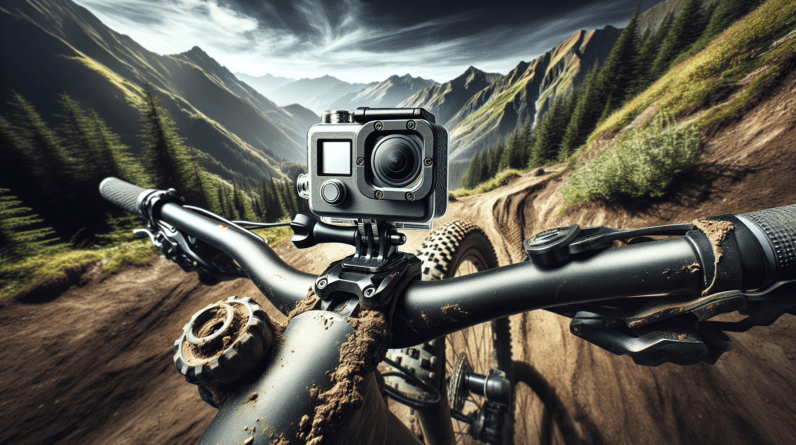Are you a passionate traveler who loves capturing memories and experiences on your journeys? If so, you’ve probably come across the dilemma of choosing the right camera for your travel adventures. In this article, we will explore the differences between action cameras and DSLRs and help you make an informed decision on which one is best suited for your travel photography needs. From my experience as a travel enthusiast, I will provide insights and highlight the pros and cons of each camera type, so you can capture your travel moments in the best way possible. So, let’s dive into the world of action cameras and DSLRs for travel!
Image Quality
Action Camera
Action cameras are known for their ability to capture high-quality images and videos. With their wide-angle lenses and advanced image processing capabilities, action cameras can produce sharp, vibrant, and detailed images. These cameras are particularly well-suited for capturing outdoor activities and adventure sports, where fast-moving subjects and challenging lighting conditions are common. Whether you’re capturing a scenic landscape or an action-packed moment, an action camera can deliver impressive image quality.
DSLR
When it comes to image quality, DSLR cameras have long been the gold standard. These cameras feature larger image sensors and interchangeable lenses, allowing for exceptional image clarity, dynamic range, and low-light performance. DSLRs offer the flexibility to choose from a wide range of lenses, enabling you to capture various types of shots, from wide-angle landscapes to telephoto wildlife photography. The image quality produced by DSLRs is often unmatched, making them the preferred choice for professional photographers and enthusiasts alike.
Portability
Action Camera
One of the key advantages of an action camera is its portability. These cameras are small, lightweight, and compact, making them incredibly easy to carry around during your travel adventures. Whether you’re hiking, biking, or exploring a new city, an action camera can fit in your pocket or be mounted on a helmet, giving you the freedom to capture moments on the go without feeling weighed down by bulky equipment. The compact size of action cameras also makes them less conspicuous, allowing you to blend in with your surroundings and capture candid shots.
DSLR
In terms of portability, DSLR cameras are not as compact or lightweight as action cameras. They typically require larger carrying cases or camera bags to transport them safely. However, advancements in camera design have led to the development of more compact and lightweight DSLR models, making them more travel-friendly. While they may not be as pocket-sized as action cameras, DSLRs offer superior image quality and versatility, making them worth the extra weight for photography enthusiasts who prioritize image quality over portability.
Versatility
Action Camera
Action cameras are incredibly versatile devices. They are designed to be rugged and capable of capturing fast-paced action and extreme conditions. These cameras are waterproof, shockproof, and dustproof, allowing you to take them underwater, on rugged hikes, or even on thrilling adventures like skydiving or snowboarding. Action cameras are equipped with wide-angle lenses that capture a wide field of view, making them ideal for capturing landscapes, group shots, and immersive perspectives. They also come with various shooting modes and accessories, such as time-lapse, slow motion, and mounting options, providing endless creative possibilities.
DSLR
When it comes to versatility, DSLR cameras offer unparalleled options for creativity and flexibility. With interchangeable lenses and a wide range of photography accessories available, DSLRs can adapt to various shooting scenarios and cater to different photography styles. From capturing breathtaking landscapes to stunning portraits, DSLRs can handle any genre of photography with precision and control. Additionally, DSLRs offer advanced manual settings, allowing photographers to fine-tune exposure, focus, and other parameters to achieve their desired results. Whether you’re a professional photographer or an amateur enthusiast, a DSLR can unlock your creative potential and deliver exceptional results.
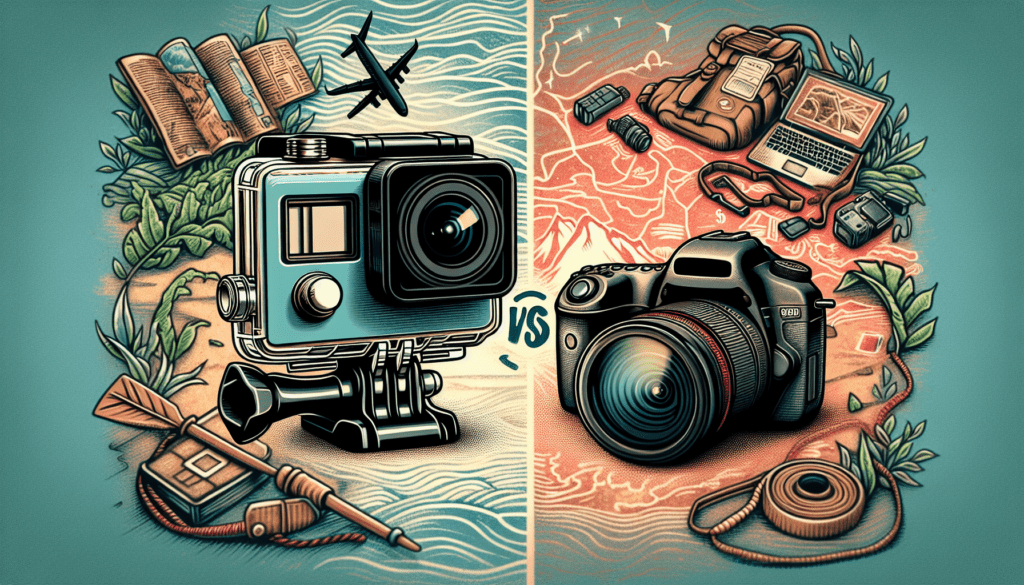
Ease of Use
Action Camera
Action cameras are designed to be user-friendly and intuitive, making them suitable for both beginners and experienced photographers. These cameras typically have simple controls and menus, allowing you to quickly adjust settings and capture the moment without any hassle. Most action cameras offer features like one-touch recording and remote control options, allowing you to capture shots in the heat of the action or from a distance. The compact size of action cameras also contributes to their ease of use, as they can be operated with one hand and easily mounted on various accessories for hands-free shooting.
DSLR
While DSLRs may have a steeper learning curve compared to action cameras, they offer a vast array of manual controls and settings that allow photographers to have complete control over their images. DSLRs offer advanced features like aperture priority, shutter priority, and full manual mode, which can be overwhelming for beginners. However, with proper guidance and practice, DSLRs can provide unparalleled control over exposure, focus, and other crucial parameters. Many DSLR models also incorporate user-friendly interfaces and intuitive menus to make the navigation and customization process more accessible for photographers of all skill levels.
Battery Life
Action Camera
Action cameras are designed to be energy-efficient, allowing them to capture footage for extended periods on a single charge. The smaller size and lower power consumption of action cameras contribute to their impressive battery life. Depending on the model and shooting settings, action cameras can typically last anywhere from 1 to 3 hours of continuous shooting. This extended battery life makes action cameras ideal for travel situations where access to power sources may be limited, allowing you to document your adventures without worrying about running out of battery.
DSLR
Compared to action cameras, DSLRs tend to have shorter battery life due to their larger size, power-hungry components, and various features. However, DSLR cameras have the advantage of interchangeable batteries, allowing photographers to carry spare batteries and easily swap them out when needed. With extra batteries on hand, DSLR users can extend their shooting time and ensure they never miss a moment. It’s worth noting that battery life can vary between DSLR models and shooting conditions, so it’s essential to consider the specific requirements of your travel photography when planning for battery power.
Durability
Action Camera
When it comes to durability, action cameras excel. These rugged devices are specifically designed to withstand tough conditions and extreme environments. Action cameras are often waterproof and can be submerged in water without any additional housing. They are also built to withstand shock, vibrations, and impacts, making them perfect for capturing fast-paced action sports or adventure activities. Additionally, action cameras are resistant to dust, dirt, and sand, allowing you to take them on sandy beaches or dusty trails without worrying about damage. With their sturdy construction, action cameras can withstand the rigors of travel and continue capturing incredible footage.
DSLR
While DSLR cameras offer exceptional image quality and versatility, their durability can vary depending on the model and the level of protection incorporated. Many DSLR models feature rugged construction with weather-sealed bodies, protecting them from moisture, dust, and minor impacts. However, these cameras are not designed to be fully waterproof unless used with specialized housing. DSLRs are generally robust and built to withstand regular use, but they may require more care and maintenance to ensure their longevity, especially in challenging environmental conditions. It’s important to handle DSLR cameras with care and consider additional protective measures when traveling in harsh environments.
Price
Action Camera
One of the appealing aspects of action cameras is their affordability compared to DSLRs. Action camera prices can vary depending on the brand, features, and specifications, but they generally fall within a more budget-friendly range. Whether you’re a casual traveler or an adventure enthusiast, action cameras offer a cost-effective way to capture your memories without breaking the bank. Despite their lower price point, action cameras still deliver impressive image quality and versatility, making them an excellent option for individuals looking for high-quality travel footage without making a significant financial investment.
DSLR
DSLR cameras, on the other hand, tend to be more expensive than action cameras. The high-quality components, advanced features, and superior image quality associated with DSLRs contribute to their higher price tag. DSLR systems can range from entry-level models to professional-grade setups, with varying price points for different camera bodies, lenses, and accessories. While investing in a DSLR can be a significant financial commitment, many photographers consider it a worthwhile investment due to the exceptional image quality and long-term durability these cameras offer. It’s essential to weigh your budget and specific photography needs when considering the price of a DSLR camera for travel.
Lens Options
Action Camera
Action cameras typically come with built-in wide-angle lenses that offer a broad field of view, perfect for capturing expansive landscapes and immersive shots. These fixed lenses are designed to capture a wide perspective, ensuring that you don’t miss any of the action. While action cameras have limited zoom capabilities due to their fixed lenses, they excel at capturing wide-angle shots and providing a unique point of view. Some action camera models also offer additional lens attachments or filters, allowing for some level of customization and creative flexibility.
DSLR
One of the significant advantages of DSLR cameras is their extensive lens options. DSLRs use interchangeable lenses, which allow photographers to choose from a wide range of focal lengths, including wide-angle, telephoto, and macro lenses. This versatility enables photographers to capture a diverse range of shots and adapt to different shooting conditions. Whether you’re zooming in on distant wildlife or capturing intricate details in a close-up, DSLRs offer the flexibility to choose the perfect lens for any creative vision. The ability to switch lenses also allows photographers to upgrade their gear as their skills and interests evolve.
Video Recording Capabilities
Action Camera
Action cameras are renowned for their exceptional video recording capabilities. These cameras can shoot high-resolution videos, including 4K and even 8K footage in some recent models. Action cameras excel in capturing fast-paced action and sports, thanks to their high frame rates and advanced image stabilization technology, which keeps footage steady even in the most dynamic situations. Whether you’re recording your mountain biking adventure or capturing snorkeling footage underwater, an action camera can deliver captivating videos with rich colors and smooth motion, perfect for sharing your travel experiences with others.
DSLR
While DSLR cameras are primarily known for their still image capabilities, they are also capable of recording high-quality videos. DSLRs offer the advantage of using larger sensors and interchangeable lenses, which contribute to superior image quality, depth of field, and low-light performance in videos. DSLRs also provide manual control over various video settings, such as frame rates, shutter speed, and ISO, allowing videographers to have complete creative control over their footage. Additionally, many DSLRs offer external microphone inputs, enabling users to capture high-quality audio along with their videos. For travel videographers who prioritize image quality and control, DSLRs can be an excellent choice.
Post-Processing
Action Camera
The post-processing capabilities of action cameras are often more limited compared to DSLRs. These cameras are designed to capture vibrant, ready-to-share images and videos without the need for extensive editing. While action cameras may offer basic editing options, such as cropping or applying filters, they are not equipped with advanced features or the ability to shoot in RAW format. This limitation can be a potential downside for photographers who prefer fine-tuning their images and having greater control over post-processing. However, for individuals who value the convenience of quick and easy sharing, action cameras provide a straightforward workflow by delivering ready-to-use footage straight out of the camera.
DSLR
When it comes to post-processing, DSLR cameras offer extensive opportunities for editing and fine-tuning images. DSLRs have the ability to capture images in RAW format, which preserves all the original data captured by the camera sensor, providing maximum flexibility for post-processing adjustments. RAW files contain more color information and dynamic range, allowing photographers to recover details in shadows and highlights during editing. DSLRs also often come equipped with editing software or support popular editing software programs, allowing photographers to unleash their creativity and achieve their desired results through post-processing. For photographers who enjoy the artistic process of editing, DSLRs provide ample opportunities for exploration and experimentation.
In conclusion, whether you choose an action camera or a DSLR for your travel adventures depends on your priorities and specific needs. Action cameras excel in portability, durability, and ease of use, making them perfect for capturing action-packed moments and adventurous activities. On the other hand, DSLRs offer superior image quality, versatility, and extensive creative control, making them the preferred choice for photography enthusiasts seeking professional-grade results. Consider your budget, desired image quality, shooting preferences, and editing capabilities when making your decision. Ultimately, both types of cameras have their own unique strengths, and choosing the one that best suits your travel photography style will ensure you capture and preserve your memories in the best possible way.

